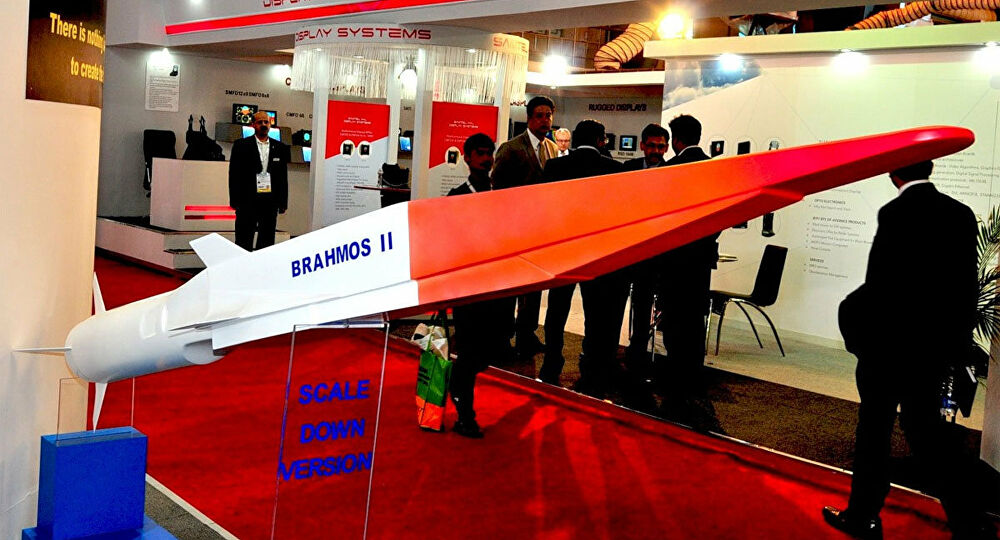India’s BrahMos supersonic cruise missile (co-developed in collaboration with Russia) is one of the very few indigenous weapons that has attracted global attention and whose deployment has seriously concerned adversaries.
Stranded On Space Station: ‘Denied Entry’ Back To Earth, Why This Russian-Origin Astronaut Spent Almost A Year In The Sky
There have been continuous reports of south-east nations like the Philippines, Vietnam, Indonesia as potential buyers of BrahMos missiles. As per the latest reports, the Philippines could soon acquire BrahMos supersonic cruise missiles as the country has allocated funds for the planned acquisition of a shore-based anti-ship weapon system.
Earlier, EurAsian Times had reported that – “There are discussions going on a range of weapons systems between India and the Philippines. Once travel becomes possible, the joint committee that looks at defense logistics will meet to discuss these things,” said India’s ambassador to the Philippines Jaideep Majumdar.
India had offered $100 million a line of credit to the Philippines for defense purchases but Manila is considering the option to procure BrahMos missile with its own funds.
New Reports Over BrahMos
Now, the Inquirer reported that the Philippines’ budget department has released initial funding for the acquisition. This assumes huge significance for India as Manila was expected to acquire BrahMos missiles under a government-to-government deal.
The Department of Budget Management (DBM) issued two special allotment release orders (SARO) costing P1.3 billion and P1.535 billion for the Philippine Navy’s shore-based anti-ship missile system on December 27, according to The Inquirer. The SARO enables the country’s Department of National Defense to execute military hardware contracts.
Earlier this year, Manila and New Delhi had inked an “implementing agreement” for the possible purchase of the BrahMos missile and other Indian defense technology, The EurAsian Times reported.

The missile system can be employed for both coastal defense and ground attack roles and would strengthen Philippine military capability to primarily counter the Chinese aggression in the disputed South China Sea region. The decision comes as Philippines President Rodrigo Duterte, who has only six months left in office, is on a weapon buying spree.
On December 28, the Department of National Defense (DND) inked a P28-billion contract with South Korean shipbuilder Hyundai Heavy Industries (HHI) for the procurement of two brand-new corvettes for the Philippine Navy. The latest funding also includes the planned acquisition of combat utility helicopters.
BrahMos To Counter China?
The BrahMos, an India-Russia joint project, is believed to be the world’s fastest supersonic cruise missile. The missile with a range of 290 kilometers can be fired from land, air, sea, and undersea platforms.
The Philippines intends to deploy the BrahMos system for coastal defense and ground warfare. Given the Chinese PLA Navy’s increasing aggression in the South China Sea, this missile will significantly boost the Philippines’ military presence in the region.
China asserts sovereignty over the whole of the South China Sea. The Philippines, Malaysia, Indonesia, Brunei, and Vietnam are among the five countries with overlapping claims over this maritime region.
Earlier this year, China had passed a law allowing its coast guard to fire on foreign warships at the slightest provocation. Manila had then lodged a formal diplomatic protest against the decision. Acquiring Brahmos could act as a deterrent against what is being termed as “Chinese maritime militia”.

The BrahMos has undergone various tests in India. The missiles have been stationed in a number of critical areas along the China-US border. Additionally, the air variant of the missile has been tested from the Sukhoi 30 MK-I.
Plans to sell the BrahMos to the Philippines hit hurdles in December last year, with Manila citing fiscal constraints caused by the Covid-19 outbreak as the reason. Defense Secretary Delfin Lorenzana was quoted by The Philippine Daily Inquirer as saying, “Because of the pandemic, we lost the budget to procure it. We need to prioritize our citizens instead of the cruise missile, so there are no funds yet.”
Lorenzana had said, “The problem is, it’s a multi-year obligation. The President does not want us to enter into loan agreements that would be inherited by the administration after him… So, we are caught with two dilemmas: How do we buy one when we don’t have money, and what if we acquire one through a loan, but the next administration might criticize us.”
Dividends For India
India would gain a foothold as a major arms exporter in Asia if the Brahmos deal materializes. Last year, Roman Babushkin, the Russian Embassy’s Deputy Chief of Mission in India, revealed that the Indo-Russian joint venture (JV), BrahMos Aerospace, is trying to export the weapons to other countries, starting with the Philippines.
The BrahMos has sparked a lot of attention around the world. Vietnam and the United Arab Emirates, in addition to the Philippines, are rumored to be interested in purchasing the Brahmos. According to reports, India has had similar discussions with Argentina, Brazil, Indonesia, and South Africa.

By 2025, the goal is to reach a five-billion-dollar target for defense exports. And it appears that the BrahMos will be the mission’s cornerstone. But this agreement is about more than just arms sales. India’s decision to sell defense equipment to the Philippines raises the stakes in the competition with China.
Earlier this month, Indian Defense Minister Rajnath Singh inaugurated a Brahmos missile production unit in Lucknow, Uttar Pradesh. This unit will manufacture 80 to 100 Brahmos missiles per year, giving a big boost to the government’s ‘Make in India’ and ‘Atmanirbhar Bharat’ (self-reliant) initiatives.
BrahMos II Missile
BrahMos Aerospace had announced the development of a hypersonic variant, BrahMos II, in 2008. The BrahMos II is twice as fast, capable of exceeding a speed of Mach 6 or six times the speed of sound.
Despite the fact that the missile is projected to have a range of 600 kilometers, experts believe that the BrahMos II, which is identical to Russia’s Zircon hypersonic missile, can fly at a speed of Mach 8 and have a range of 1000 kilometers.

India has already joined the race to build hypersonic weapons alongside the rest of the superpowers. It has successfully tested Hypersonic Technology Demonstrator Vehicle in 2020. India’s Defence Research and Development Organisation developed the HSTDV.
This test-firing, according to experts, was linked to the development of the BrahMos II hypersonic missile.
The BrahMos II was supposed to be introduced in 2017. Due to certain technical issues, it is now scheduled to reach initial operational capability between 2025 and 2028. India has reportedly 12 operational hypersonic wind tunnels and can test hypersonic weapons at speeds of up to Mach 13.
- Contact the author at ashishmichel@gmail.com
- Follow EurAsian Times on Google News




